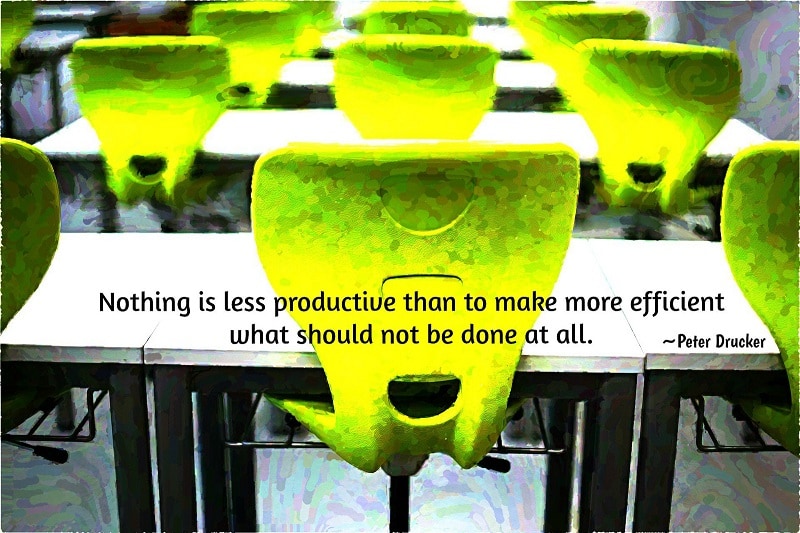In what was arguably David Foster Wallace’s most famous speech, he told a story of two young fish who encounter an older fish as they’re swimming along one day. The older fish asks them how the water is. Puzzled, one of the younger fish asks the other what water is. The takeaway?
“The immediate point of the fish story is that the most obvious, ubiquitous, important realities are often the ones that are the hardest to see and talk about.”
In other words, since water was everywhere, the fish didn’t notice it. It’s hard to take a step back from an environment that surrounds you and see it for what it is. The same goes for employees and company culture.
Companies that are too focused on the bottom line may try to reprioritize company culture. But it turns out that the two are inextricably linked. As Entrepreneur reports, one study from Columbia University shows that companies with rich organizational culture have a turnover likelihood of 13.9 percent. Companies with poor culture have a turnover of a whopping 48.4 percent.
If your company wants to avoid high turnover rates, disgruntled employees and a fleeting legacy, it’s time to focus on what you can do to shape your company culture over time.
What do you want your reputation to be? Once you pinpoint your cultural goals, use these three methods to make them a reality.

Table of Contents
Lead from the Top Down
Leadership means more than just cultivating authority and respect. You have an obligation to set the tone for the entire company.
As Forbes points out, it’s up to you to decide what’s important and live that truth. If you’re trying to build a teamwork-focused culture, you and your executive team must collaborate smoothly and demonstrate how cooperation produces results.
If you’re aiming for a transparent culture, your management staff should be ready to keep their doors open through good times and through bad.
Use Culture in Decision-Making
If you don’t incorporate your company’s values into your decision-making processes, your claims about your organizational environment tend to ring hollow. After all, actions speak louder than words. So how can you avoid this common pitfall?
An important step for building new culture, according to author and entrepreneur Ron Ashkenas for Harvard Business Review, is to “use desired behaviors as criteria for hiring, promoting, rewarding and developing people.”
When you sit across the desk from an interviewee and tell them about your company culture, are you describing the way things really are? Or are you talking about the way you wish it could be? Any company can talk the talk, complete with buzzwords like “fast-paced,” “work hard/play hard” and “close-knit.” But at some point, you’ll have to walk the walk and show that your company culture is thriving. That’s something you simply can’t fake.

Team Build Beyond New Hires
Oftentimes, a new hire means a flurry of introductory and team-building exercises. Why not work to maintain this communicative culture year-round? Help employees forge strong professional and social bonds by opening the lines of communication even after their first few days.
Poshly uses a culture calendar full of events (like birthdays, meetings and group challenges) to create a sense of sharing amongst its employees. All employees can access this ever-growing calendar and even add their own ideas for future events.
Your culture problem may simply be that your employees don’t know each other well enough to put names to faces. In that case, periodic icebreaker questions can help refresh new and veteran employees alike on each other’s names, positions and interests.
Some employees may even discover that their long-time coworkers have a few surprises up their sleeves, like a penchant for hot air ballooning or a world-famous collection of postcards!
It’s important to remember that company culture won’t build itself. Your organization must make intentional choices and act on them to help shape the work environment into all it can be.
Otherwise, your employees may just feel like fish out of water.

























Hi Erik,
It really does need to be a top-down thing, to ensure all flows throughout the organization. A culture. This takes time but the curve drops quickly if the management reeks of integrity, and does things with their moral compass leading the way. I have seen this in many jobs. Back when I used to work jobs LOL, a LONG time ago 😉
Thanks for sharing.
Ryan
Employees value their freedom and mostly are mostly come up creative ideas when given autonomy. Too much, unnecessary or redundant rules undermines the team spirit and kills creativity.
I think you right, Brenda